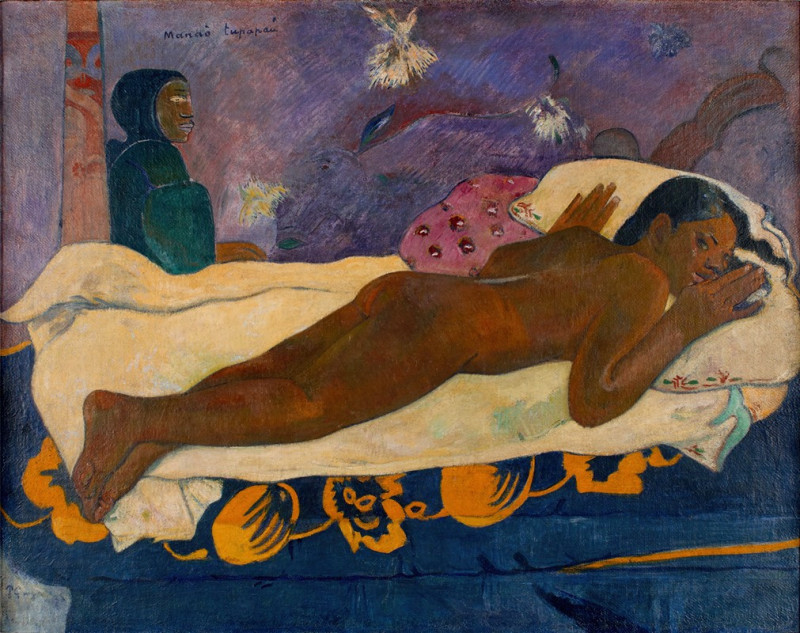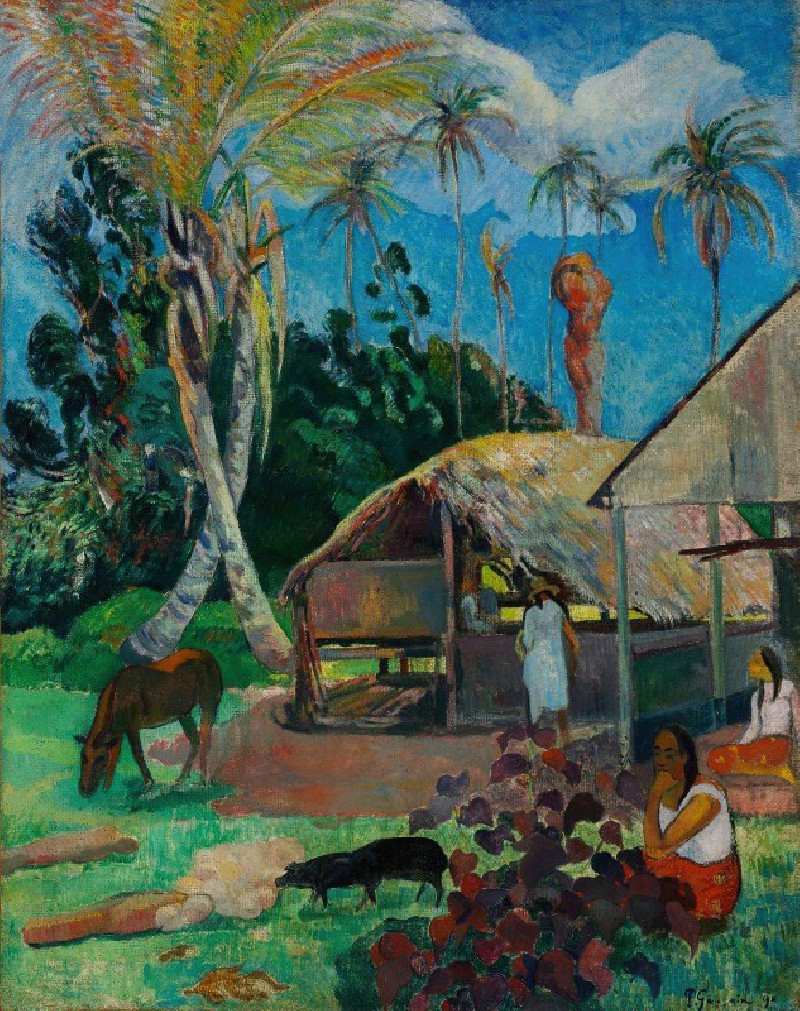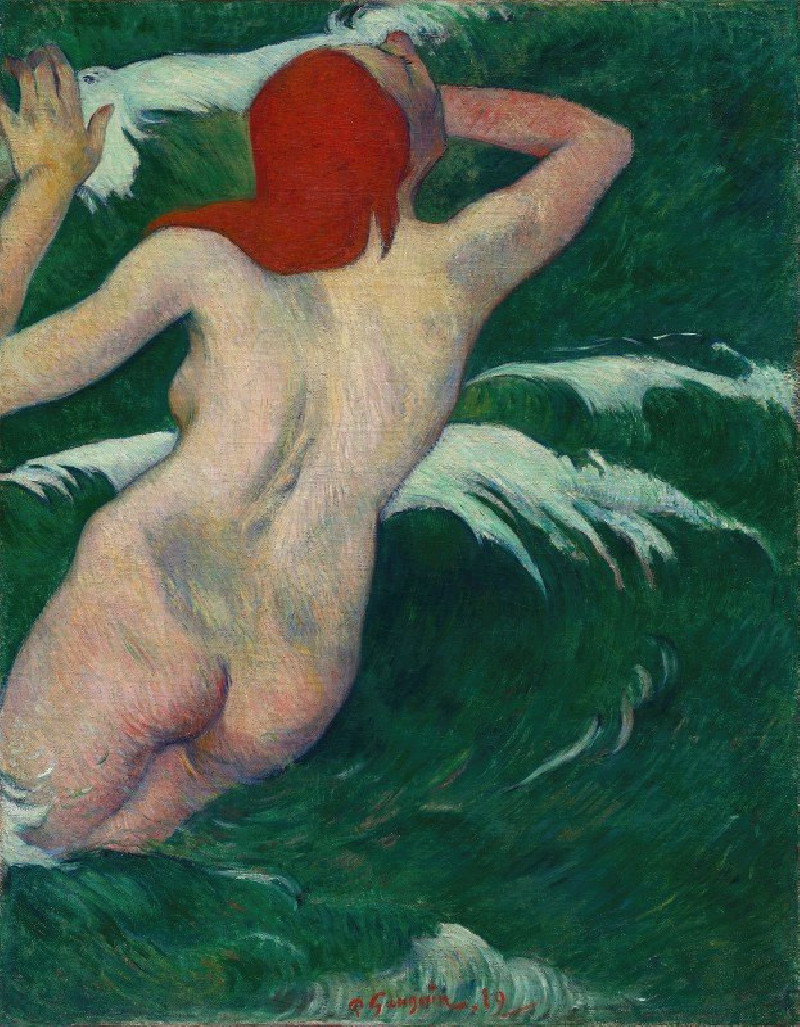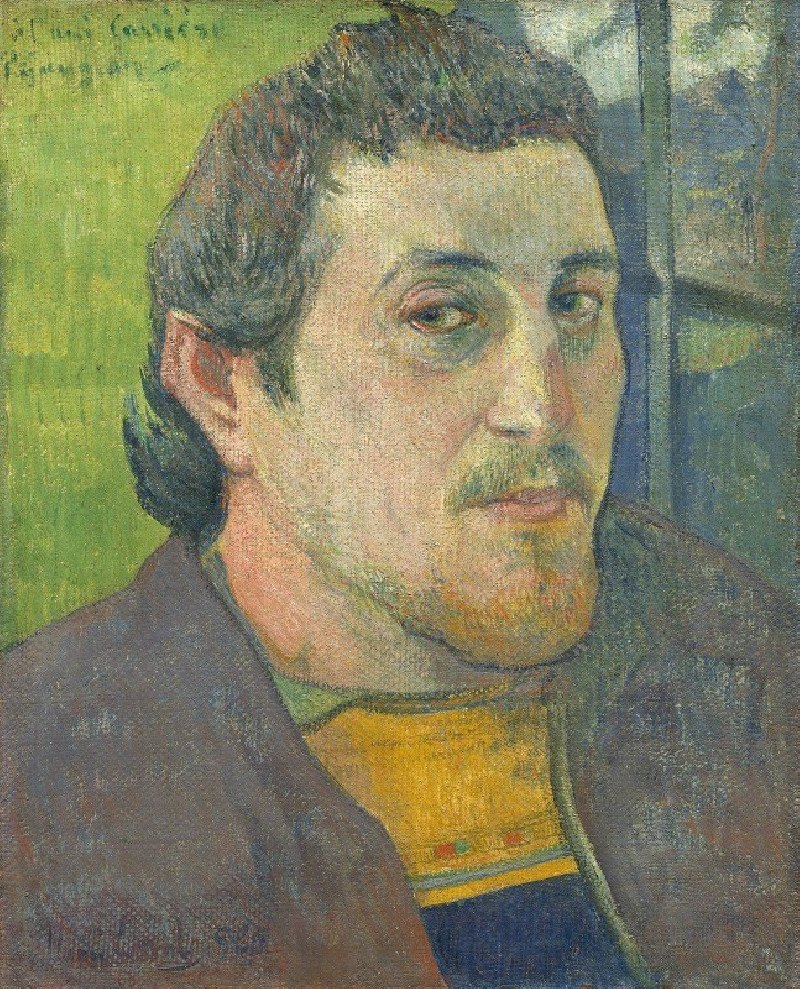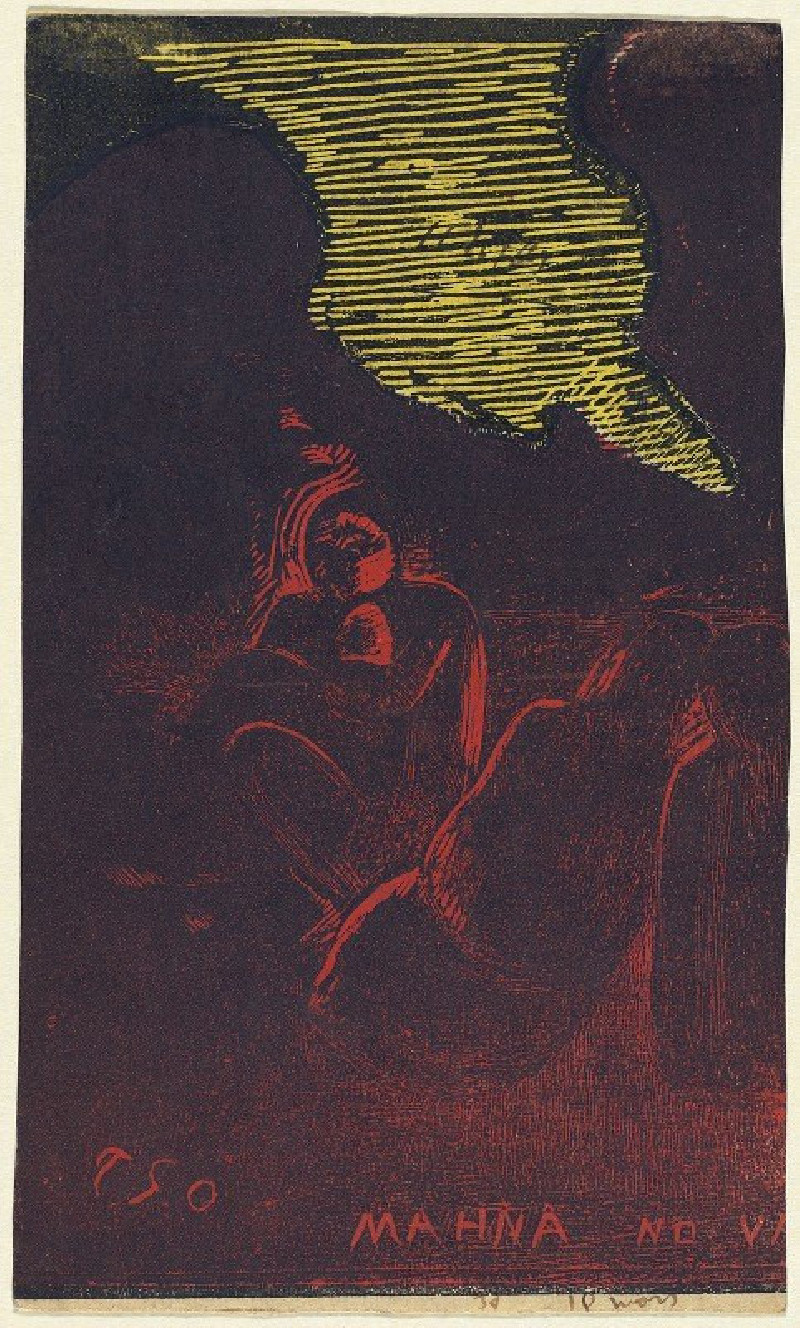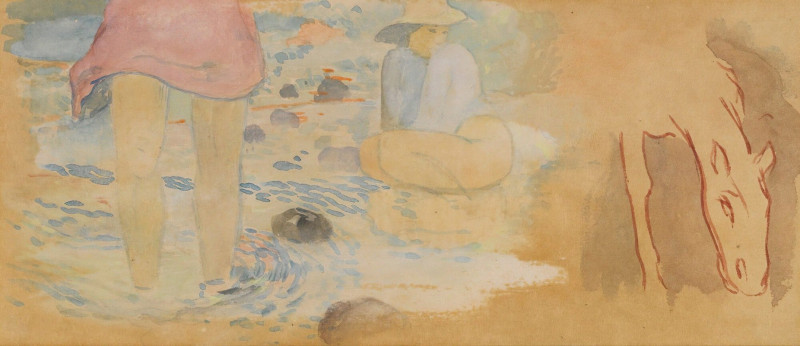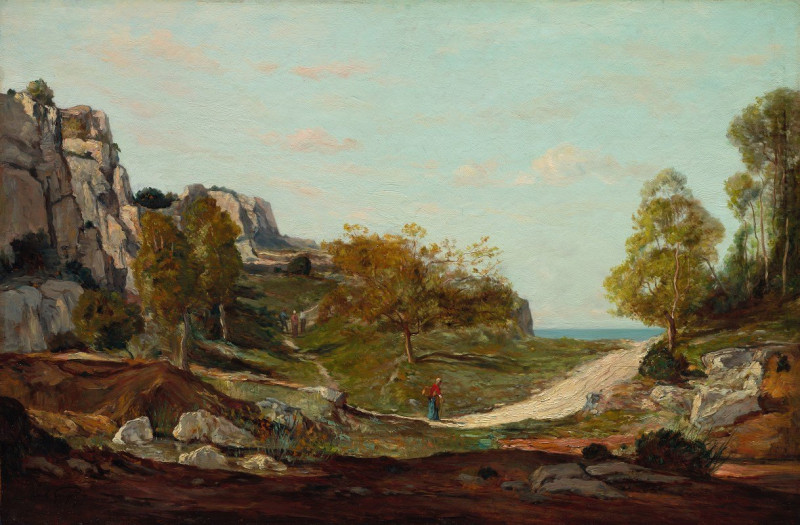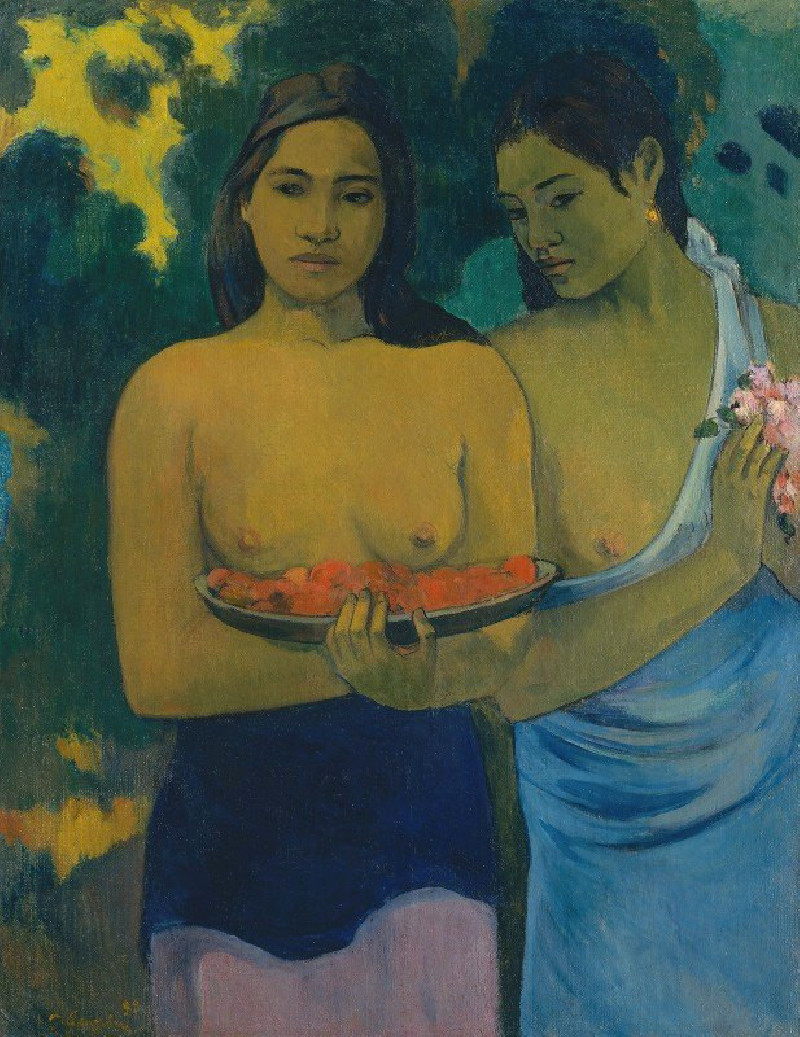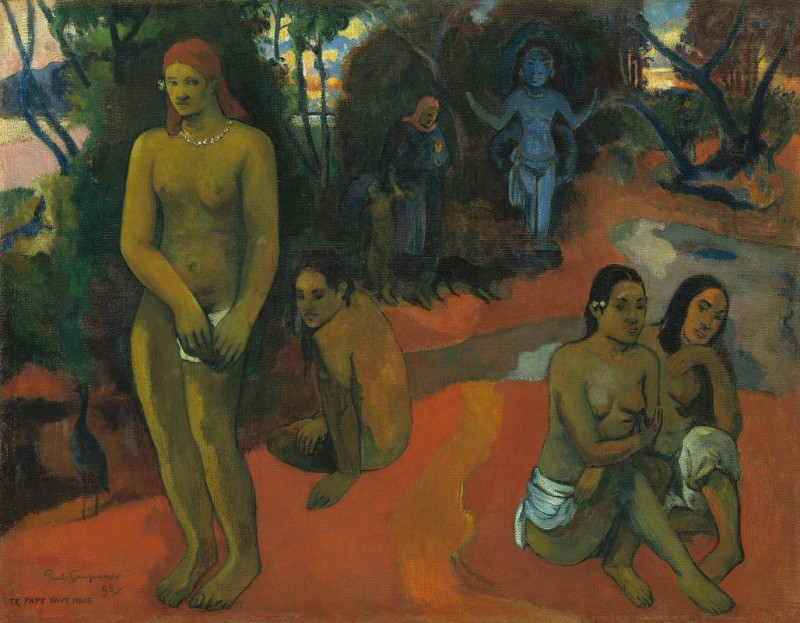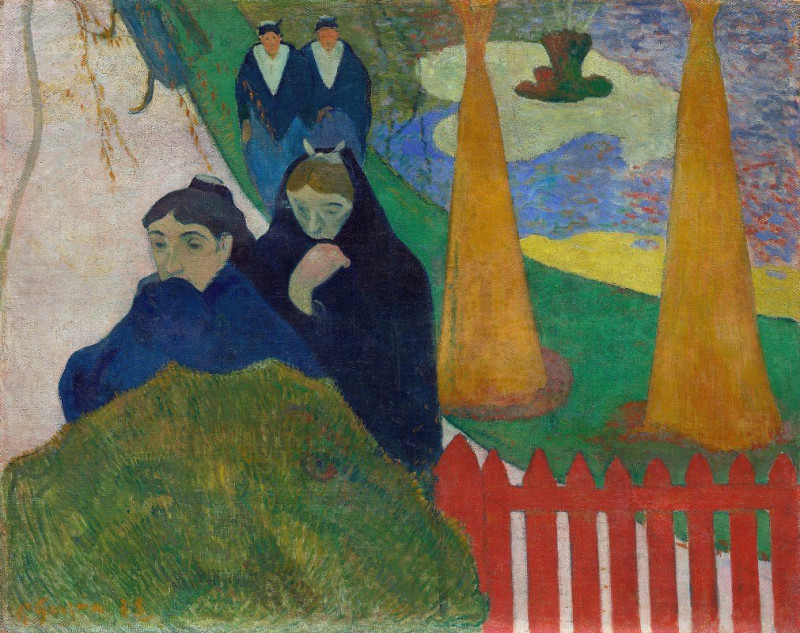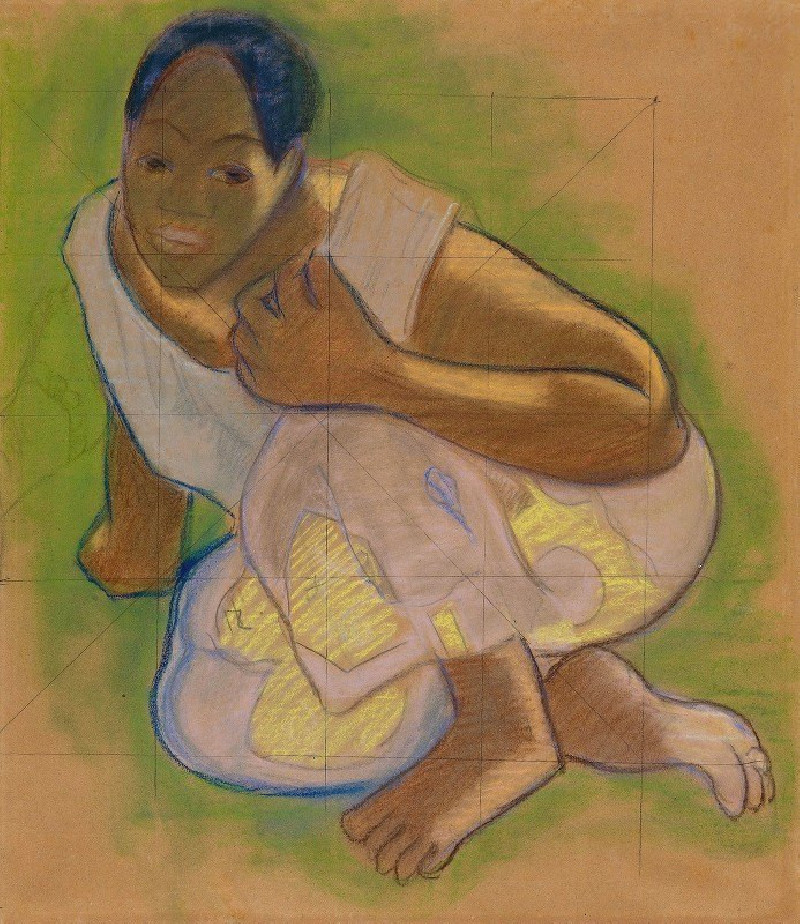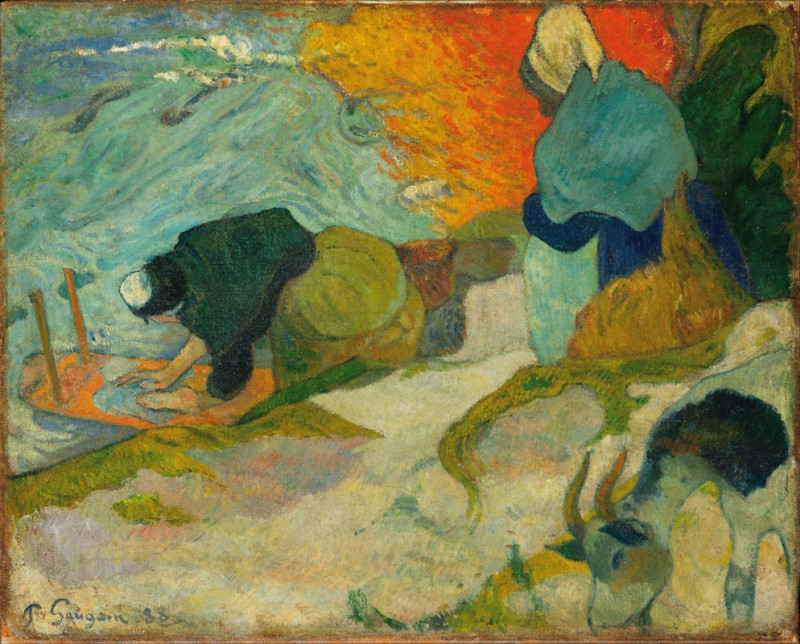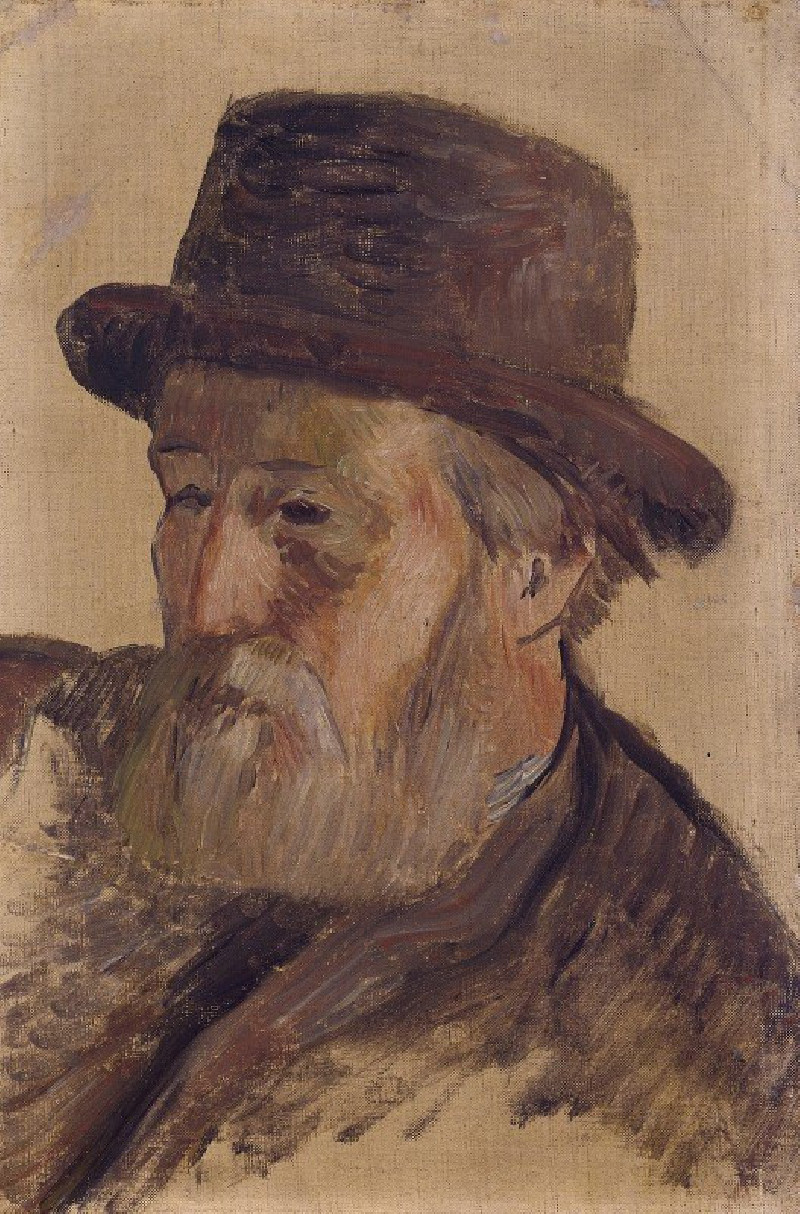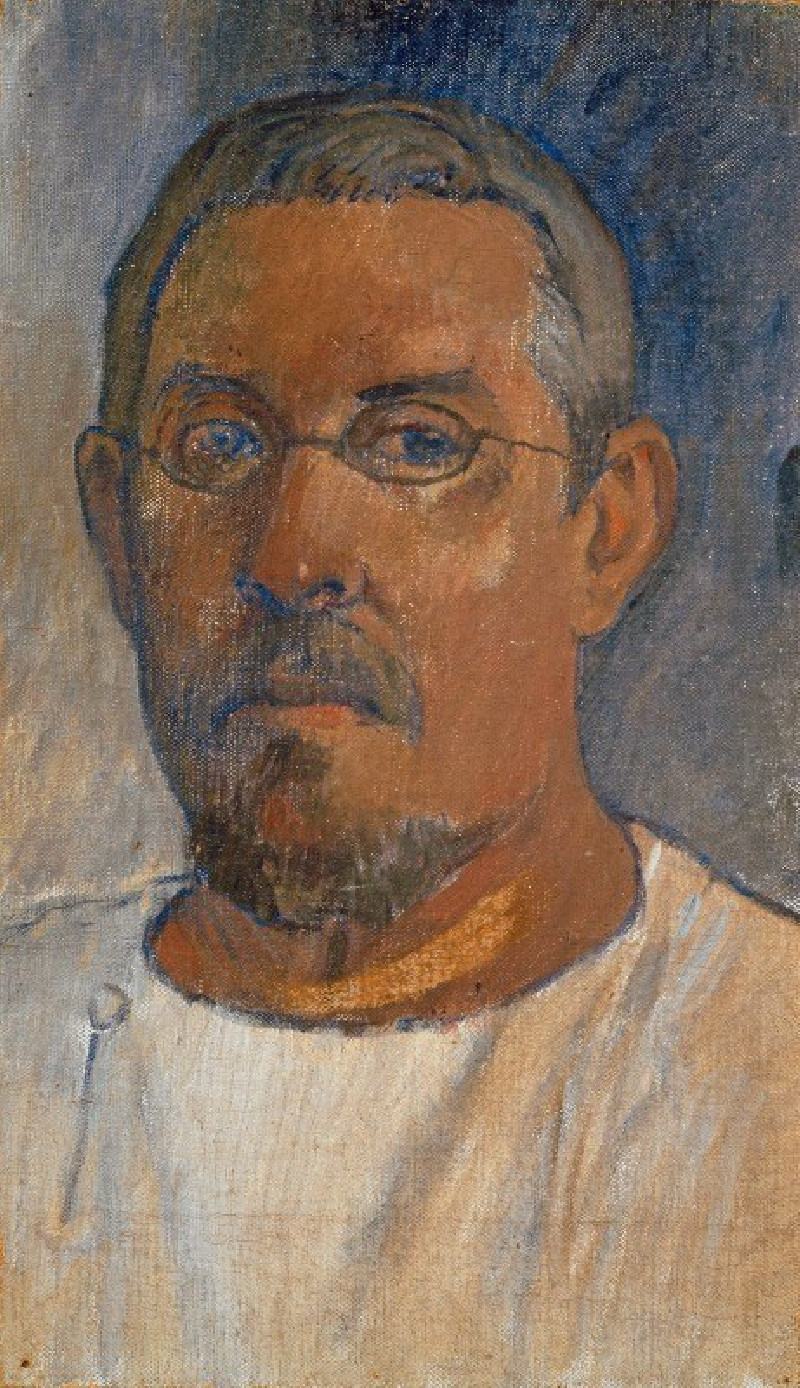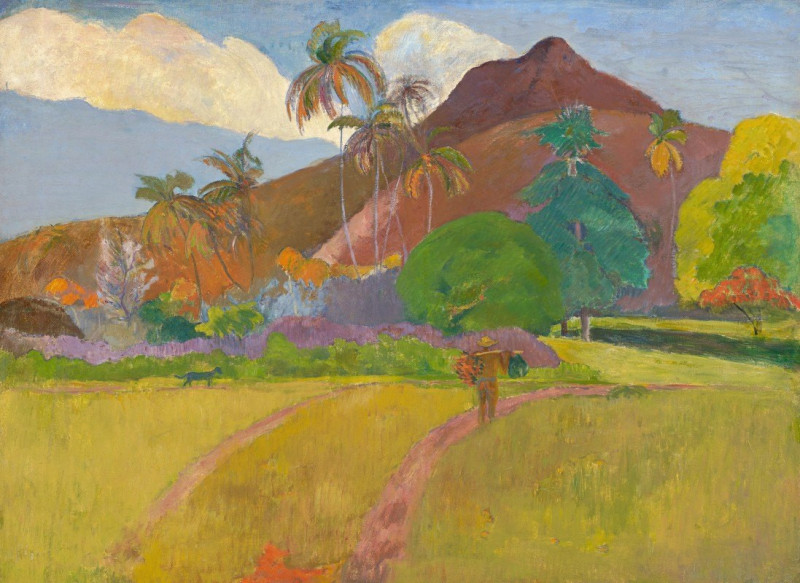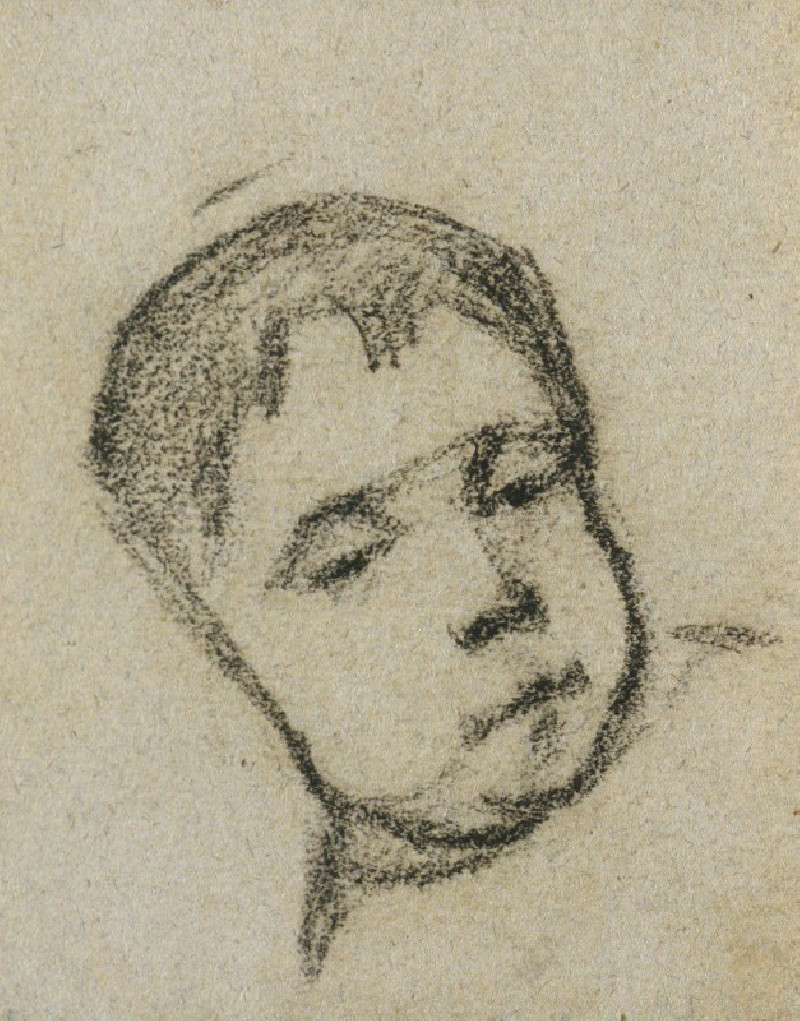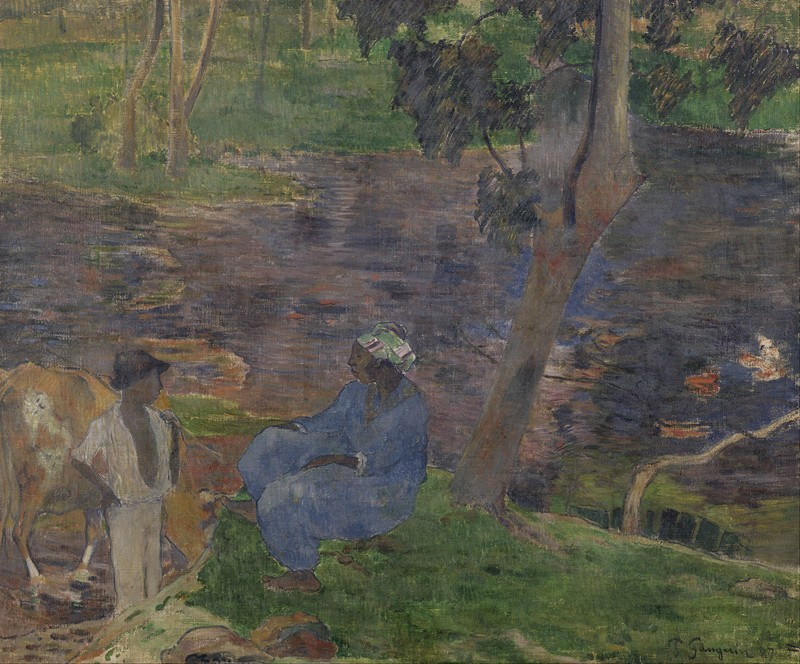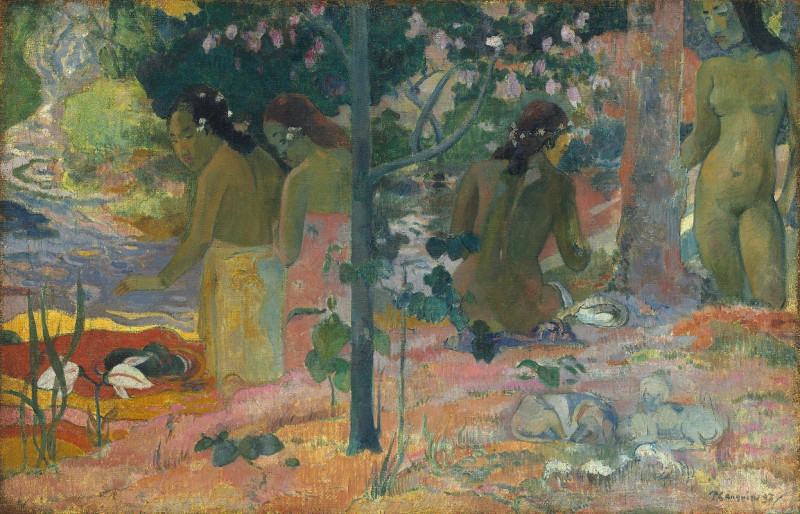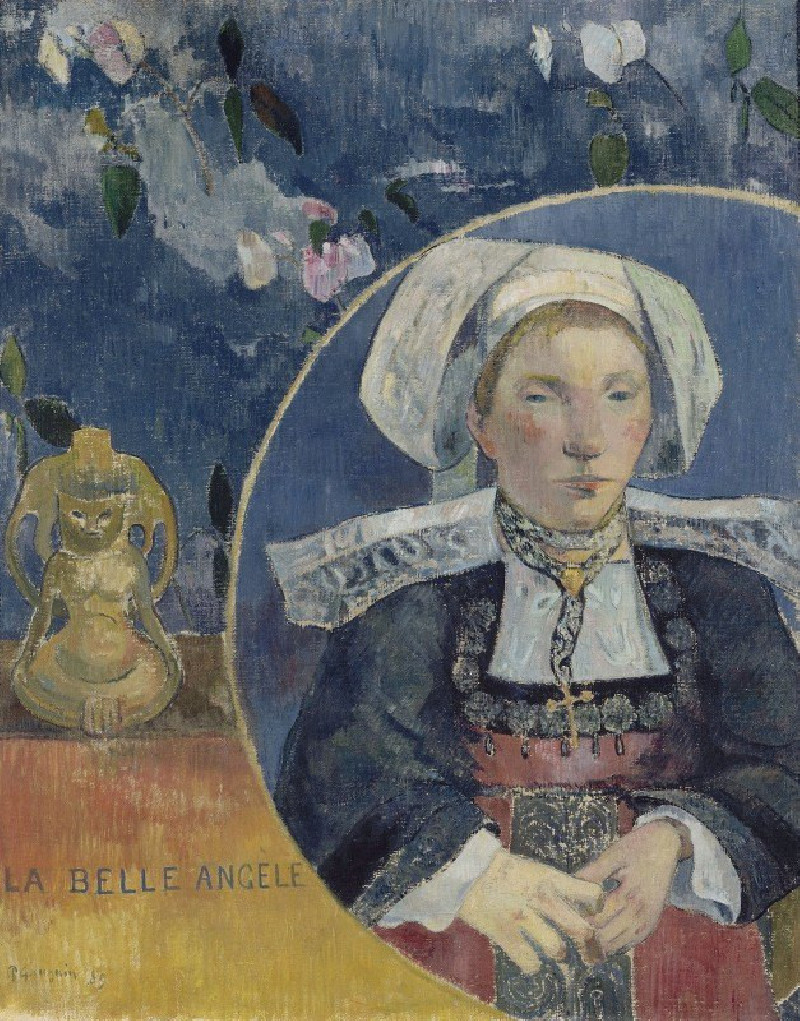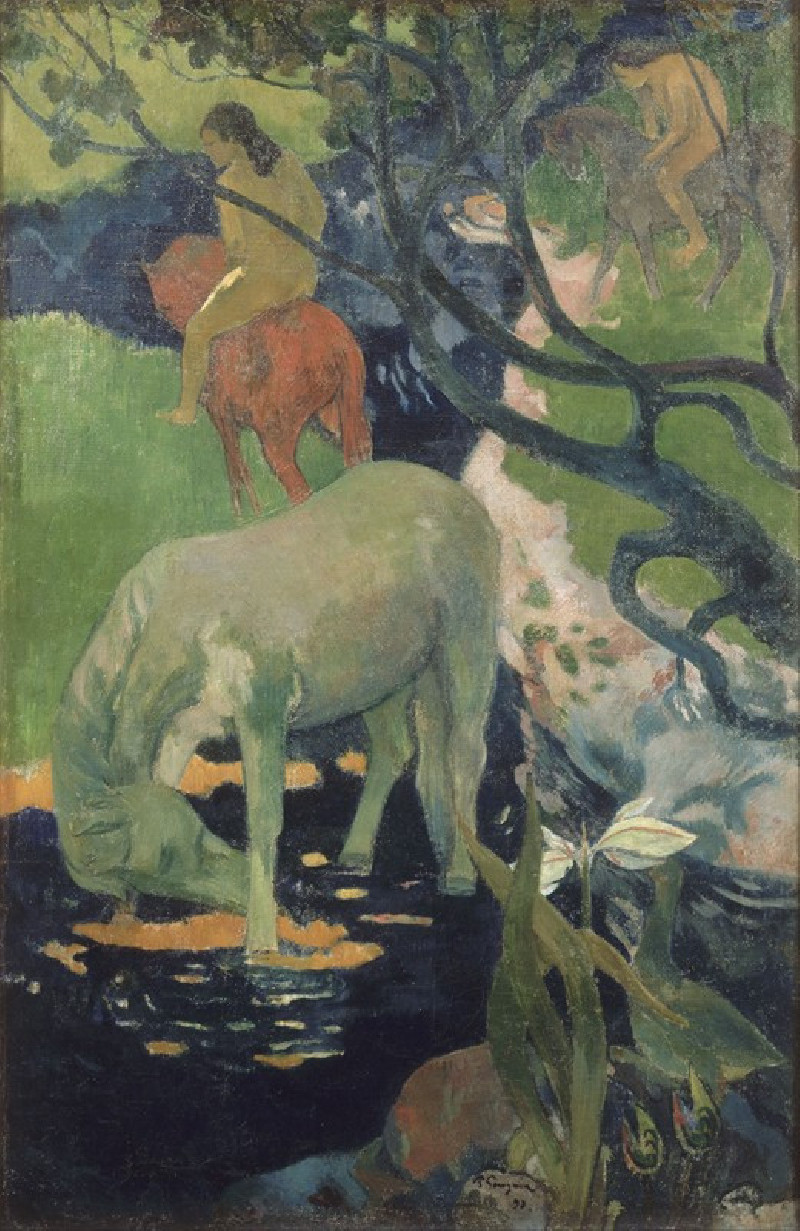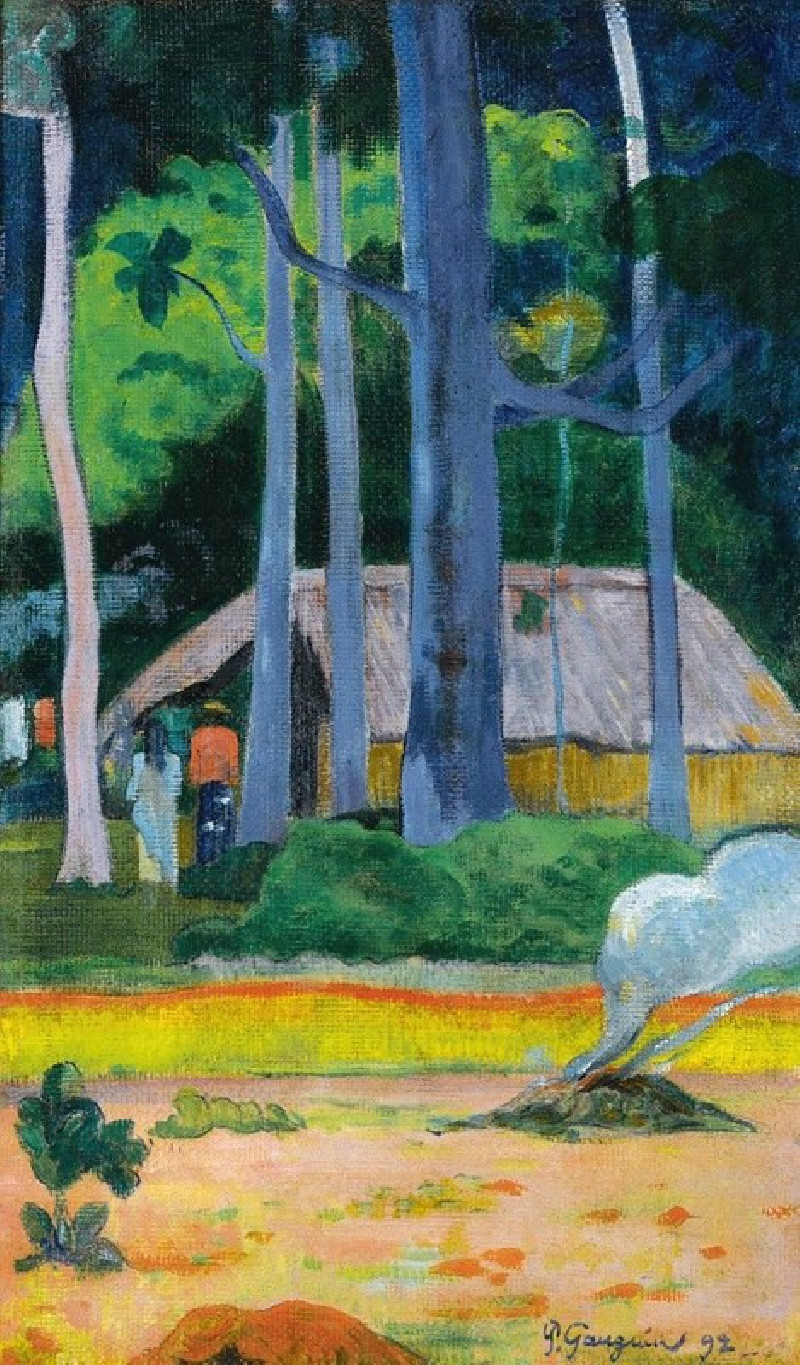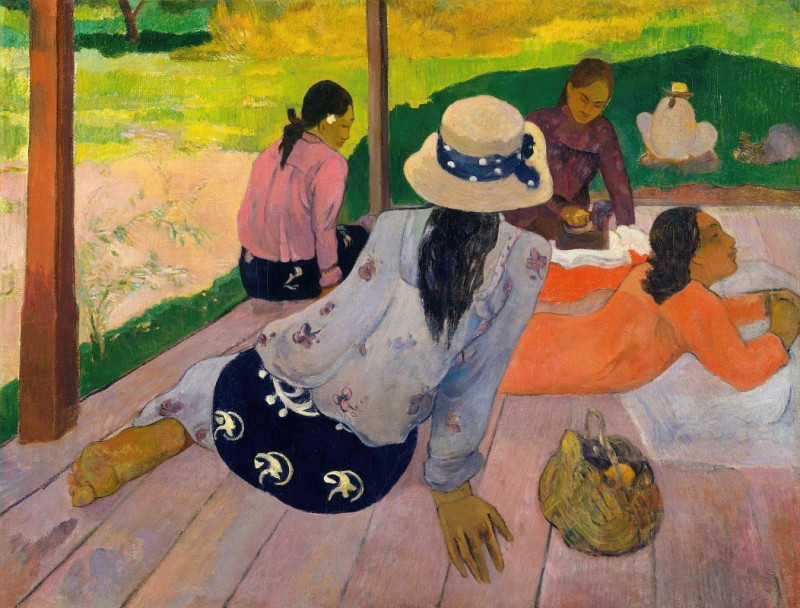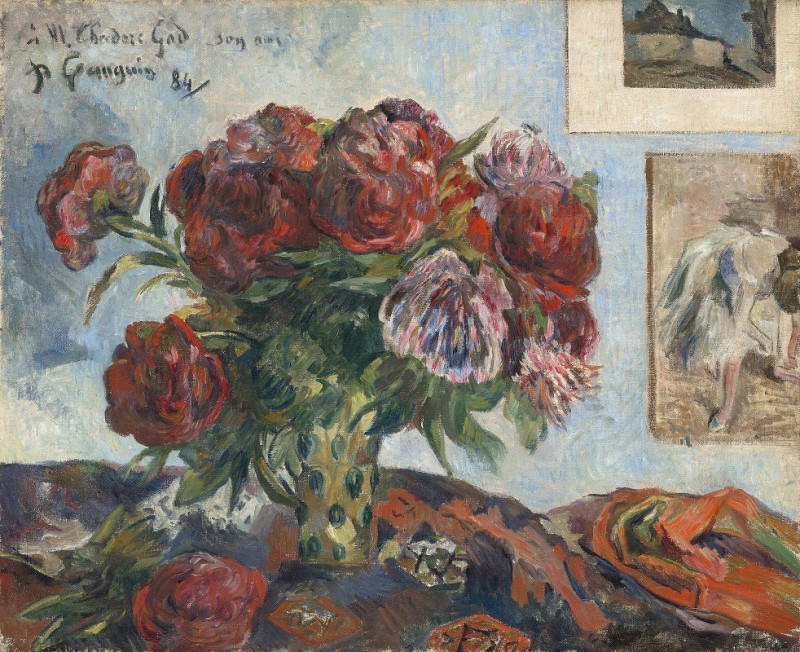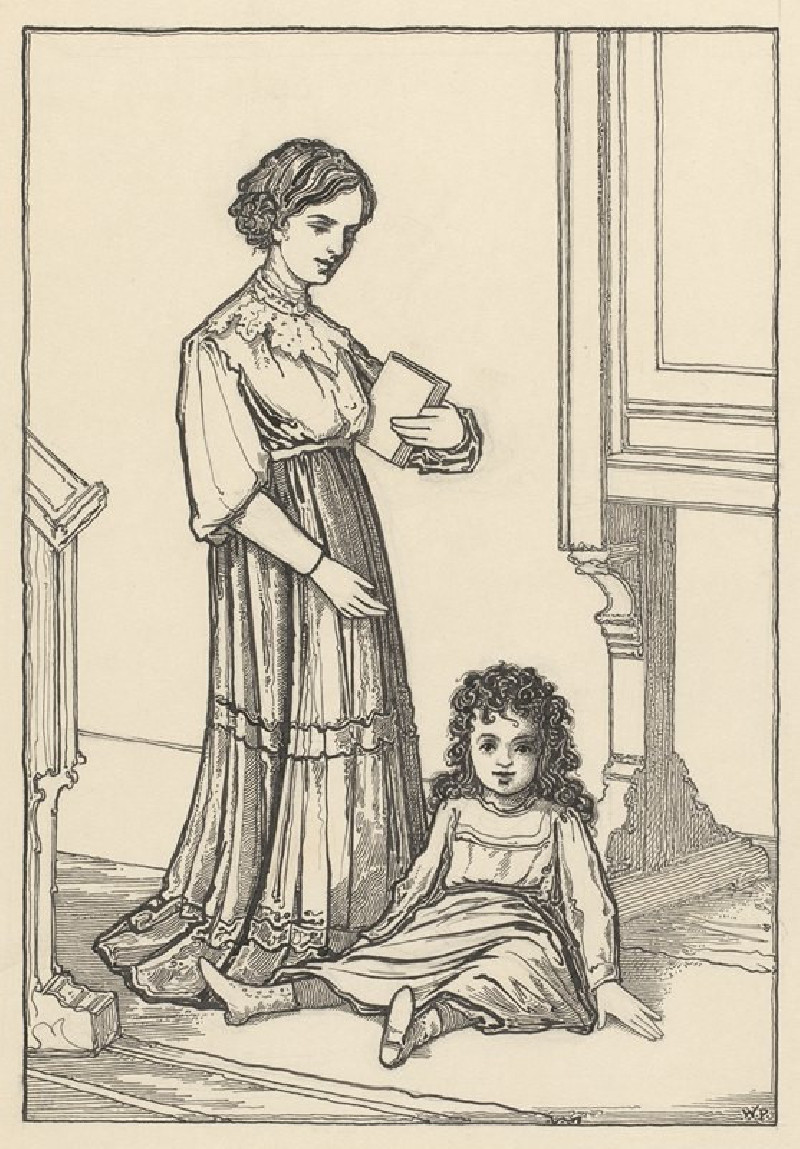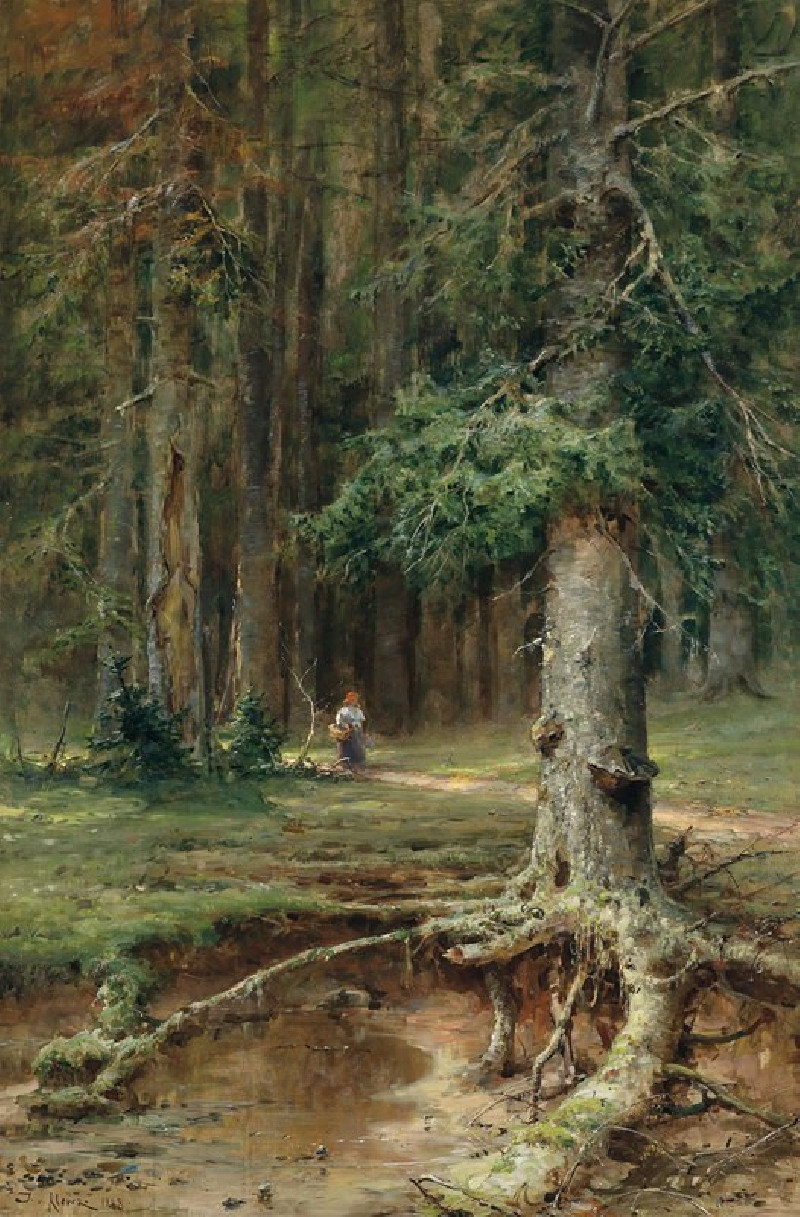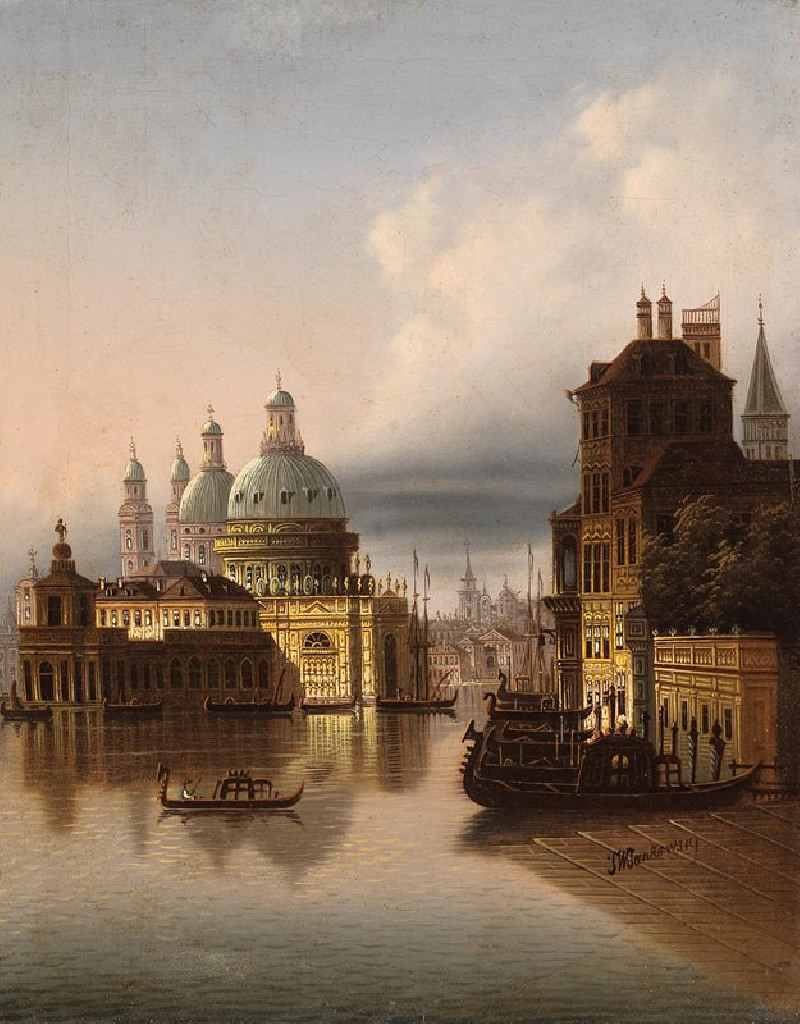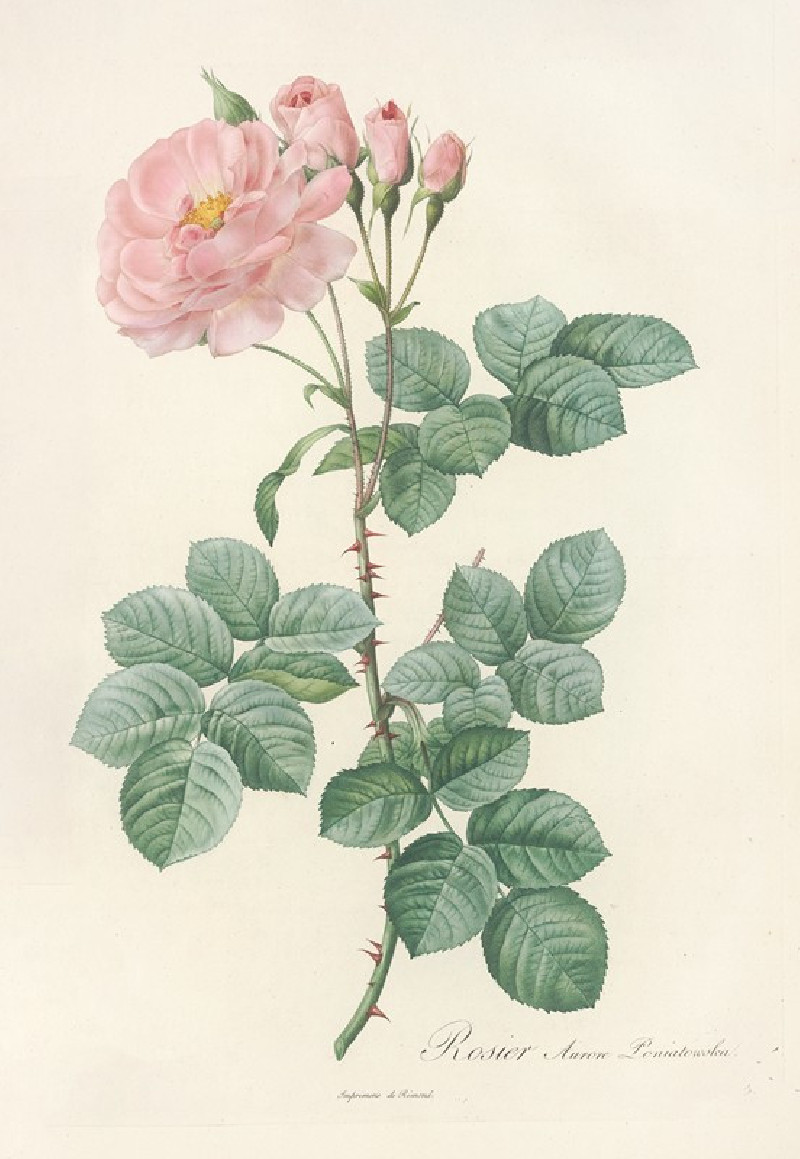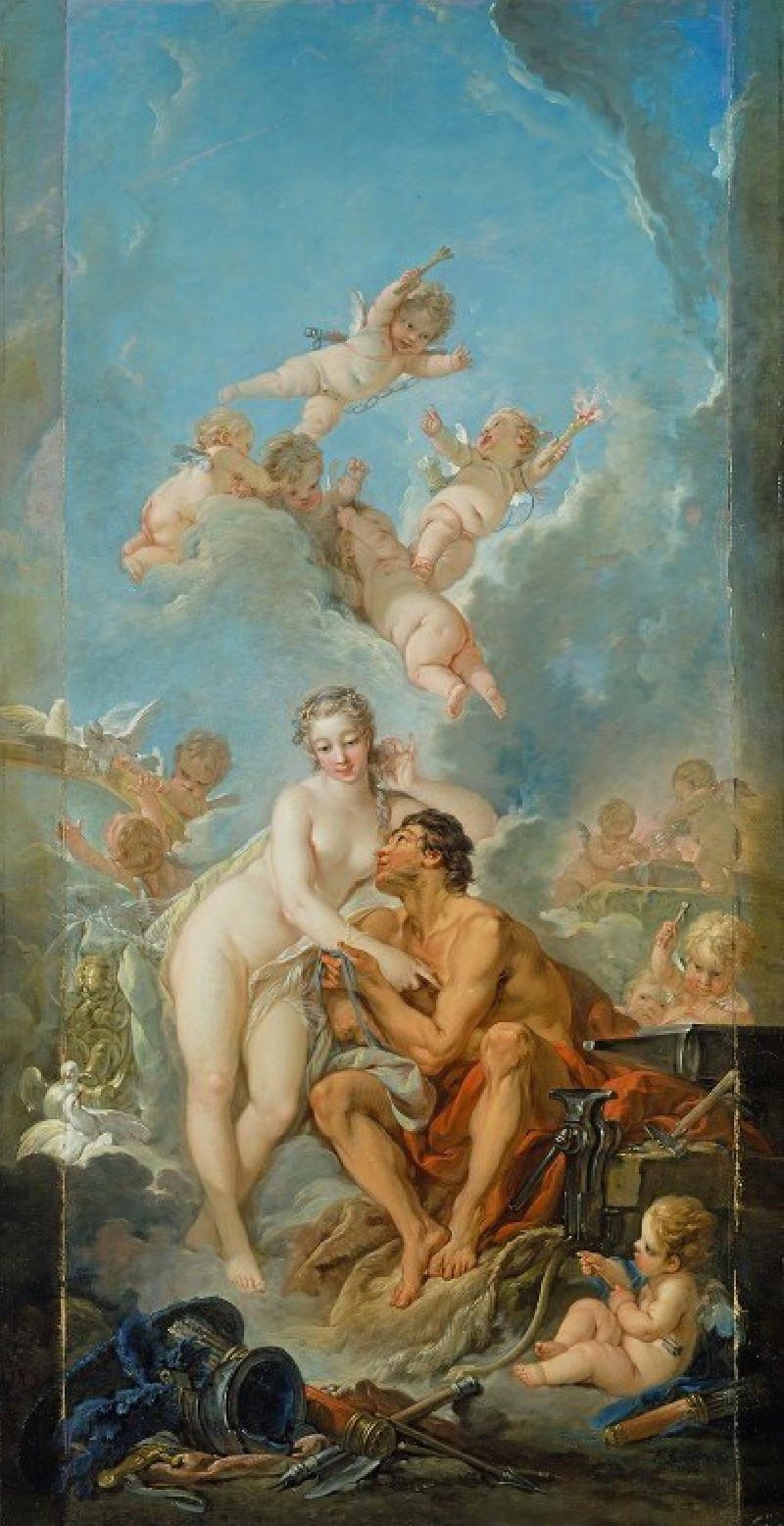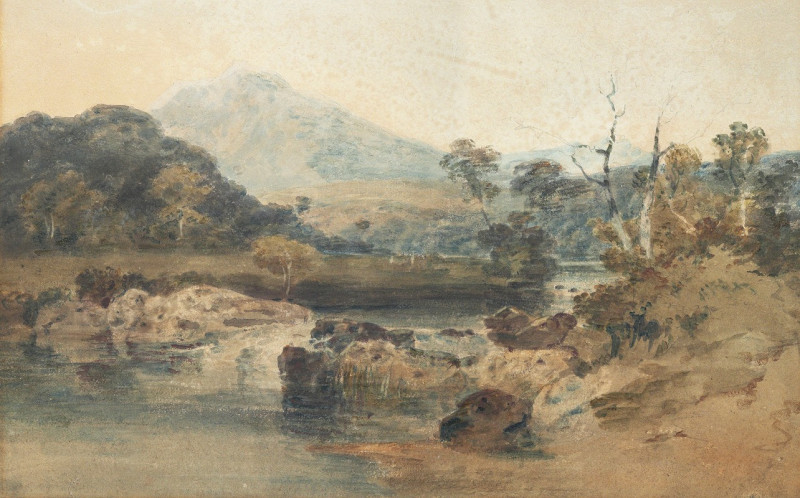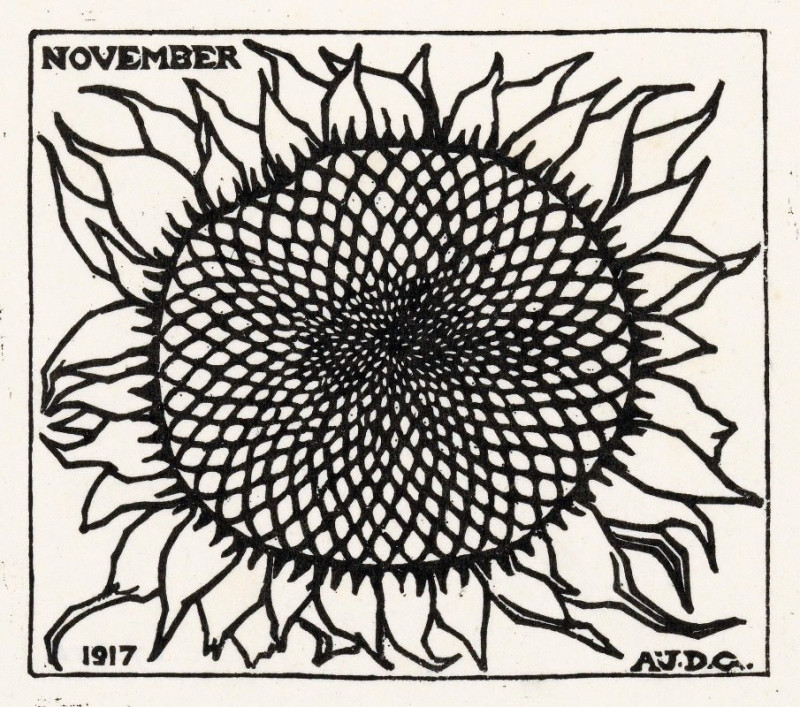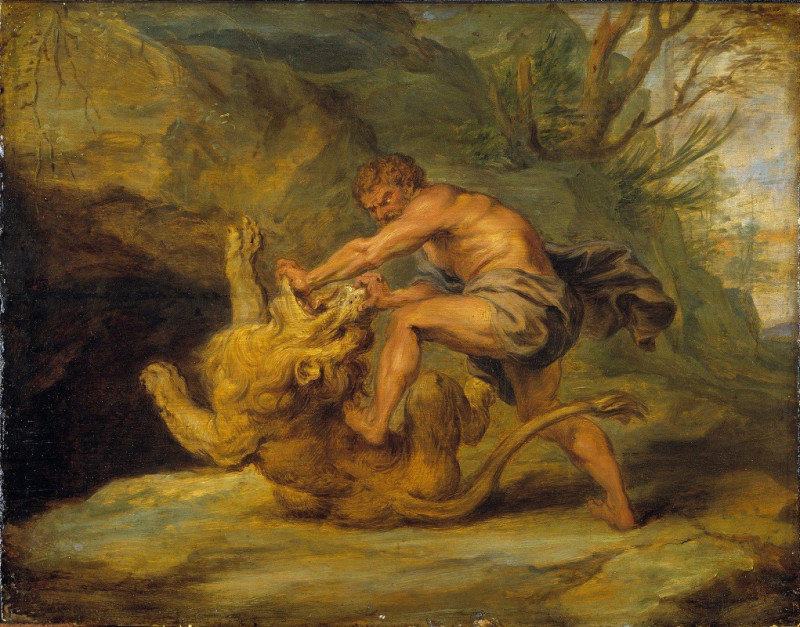Manaò tupapaú (1892)
Technique: Giclée quality print
Recommended by our customers
More about this artwork
"Manaò tupapaú," a compelling work by Paul Gauguin from 1892, articulates a vibrant fusion of the tangible and the spiritual, a recurring theme in his Tahitian oeuvre. In the painting, the viewer is greeted with a scene of vivid colors and dynamic composition, capturing a deeply personal and enigmatic moment.The central figure, a Tahitian woman, lies prone on a bed, her expression one of profound contemplation or possibly distress. Her body is gracefully elongated, draped dramatically across the richly textured yellow and orange bedding that contrasts sharply with her dark skin tone. Her gaze is directed away from the viewer, towards a mysterious, spectral figure sitting upright beside the bed. This figure, interpreted as a spirit or 'tupapaú' in Tahitian culture, is cloaked in dark green with a face that bears a subtly enigmatic smile, adding an aura of mystique and otherworldly presence.The background, flush with dark purples and robust blues, features abstract forms and ghostly white flowers that seem to float in the air, intensifying the surreal and dream-like quality of the scene. These elements, combined with the bold contours and emotional intensity of the figures, create a powerful visual narrative that explores themes of life, death, and the spiritual realm, reflective of Gauguin’s immersion in the rich cultural tapestry of Tahiti.
Delivery
Returns
Eugène Henri Paul Gauguin was a French Post-Impressionist artist. Unappreciated until after his death, Gauguin is now recognized for his experimental use of color and Synthetist style that were distinct from Impressionism. Toward the end of his life, he spent ten years in French Polynesia. The paintings from this time depict people or landscapes from that region.

